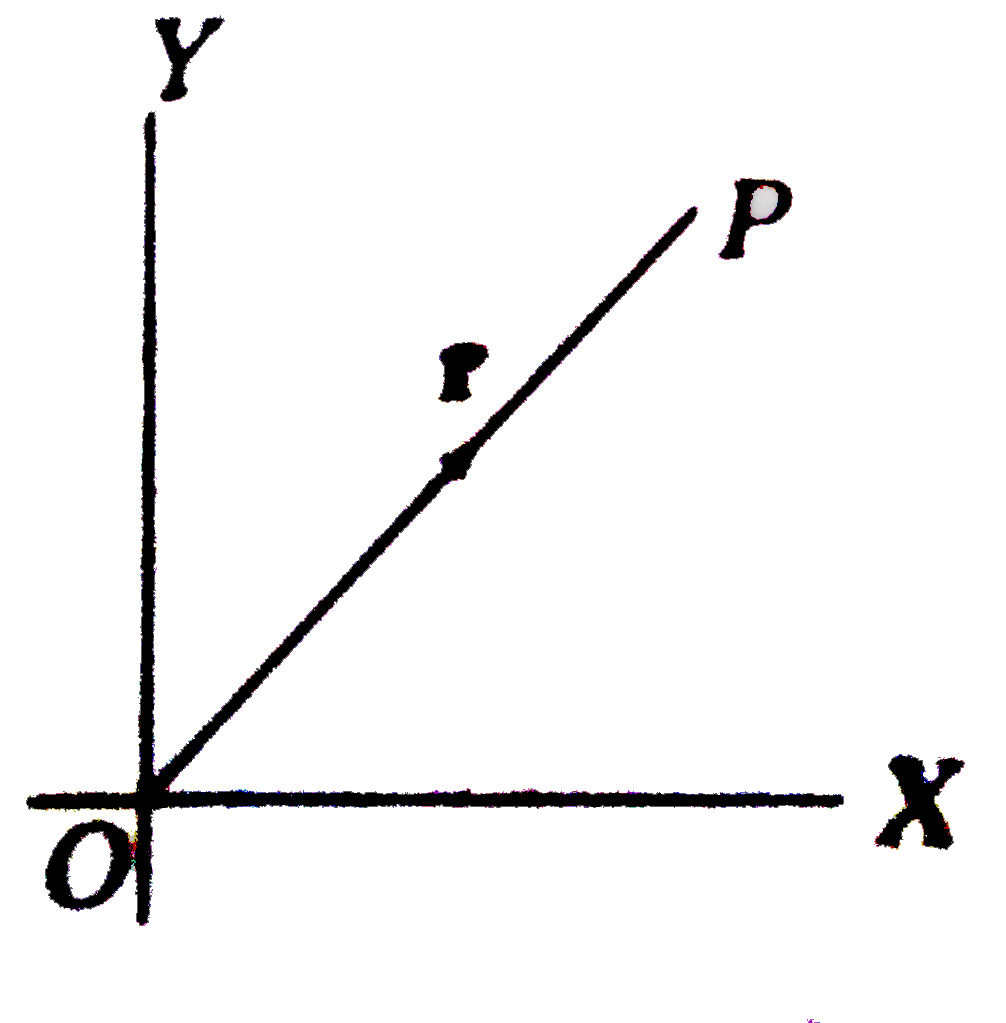A particle moves so that its position vector is given by →r=cosωtˆx+sinωtˆy, where ω is a constant which of the following is true ?
Velocity and acceleration both are parallel to r
velocity is perpendicular to r and acceleration is directed towards to origin
Velocity is perpendicular to r and acceleration is directed away from the origin
Velocity and acceleration both are perpendicular to r
The correct Answer is:B
Position vector of the particle is given by
r=cosωtx+sinωty
where, ω is a constant
Velocity of the particle is
v=drDt=ddt(cosωtx+sinωty)
=(−sinωt)ωx+(cosωt)ωy
=−ω(sinωtx−cosωty)
Acceleration of the particles
a=dvdt=ddt[−ωsinωtx+ωcosωty]
=−ω2cosωtx−ω2sinωty
⇒=−ω2r=ω2(−r)
Assuming the particle as P, then its position vector is directed as shown in the diagram.

Therefore, acceleraton is directed towards -r that is towards O (origin) v.r=−ω(sinωtx−cosωty)(cosωtx+sinωty)
=−ω[sinωtcosωt+0+0−sinωt.cosωtt]
=−ω(0)=0
⇒v⊥r[∵x⊥y]
Thus, velocity is perpendicular to r.
Topper's Solved these Questions
- MOTIONBOOK - DC PANDEYCHAPTER - MOTIONEXERCISE - Medical entrances gallery
19 Videos
- MOTIONBOOK - DC PANDEYCHAPTER - MOTIONEXERCISE - Match the Columns
4 Videos
- MEASUREMENT AND ERRORSBOOK - DC PANDEYCHAPTER - MEASUREMENT AND ERRORSEXERCISE - Subjective
19 Videos
- MOTION IN A PLANEBOOK - DC PANDEYCHAPTER - MOTION IN A PLANEEXERCISE - (C )Medical entrances gallery
32 Videos
Similar Questions
A particle move so that its position verctor varies with time as →r=Acosωtˆi+Asinωtˆj. Find the
a. initial velocity of the particle,
b. angle between the position vector and velocity of the particle at any time, and
c. speed at any instant.
View SolutionA particle moves so that its position vector varies with time as →r=Acosωtˆi+Asinωtˆj. If d→rdt gives instantaneous velocity. Find the initial velocity of particle.
View Solution
Knowledge Check
A particle moves so that its position vertor is given by →r=cosωtˆx+sinωtˆy, where ω is a constant. Which of the following is true?
Avelocity and acceleration both are perpendicular to →rBvelocity and acceleration both are parallel to →rCvelocity is perpendicular to →r and acceleeration is directed towards the originDvelocity is perpendicular to →r and acceleeration is directed away from the originA particle moves so that its position vertor is given by →r=cosωtˆx+sinωtˆy, where ω is a constant. Which of the following is true?
AVelocity and acceleration both are perpendicular to →rBVelocity and acceleration both are parallel to →rCVelocity is perpendicular to →r and
acceleration is directed to wards the originDVelocity is perpendicualr to →r and
acceleration is directed away from the originA particle moves so that its position vertor is given by →r=cosωtˆx+sinωtˆy, where ω is a constant. Which of the following is true?
AVclocity and acceleration both are
perpendicular to →rBVelocity and acceleration both
are parallel to →rCVelocity is perpendicular to →r
and acceleration is directed towards the originDVelocity is perpendicular to →r
and acceleration is directed away from the origin
A particle moves such that its momentum vector →p(t)=cosωtˆi+sinωtˆj where ω is a constant and t is time. Then which of the following statements is true for the velocity →v(t) and acceleration →a(t) of the particle :
View SolutionA particle moves so that its position vector varies with time as →r=Acosωtˆi+Asinωthai(j). The initial velocity of the particel the particle is
View SolutionThe position vector of a particle is →r=acosωti+asinωtj, the velocity of the particle is
View SolutionThe position vector of a particle at time t is given by →r=2tˆi+5tˆj+4sinωtˆk where ω is a constant.Answer the following questions
Velocity vector of the particle is
View SolutionThe position vector of a particle at time t is given by →r=2tˆi+5tˆj+4sinωtˆk where ω is a constant.Answer the following questions
Velocity vector is perpendicular to …….vector
View Solution
